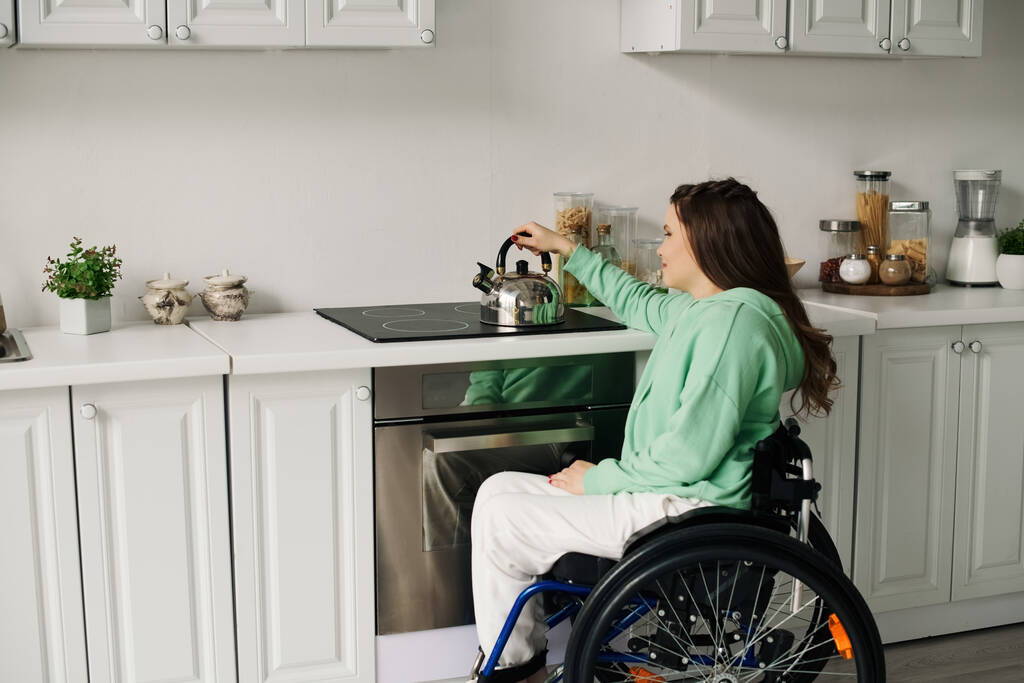
Accessible storage is crucial for NDIS providers and participants, as it can significantly improve the overall experience and quality of care. With the right strategies, organising storage can become an empowering tool for both parties, allowing easy access to essential equipment, medical supplies, and personal belongings. This blog delves into practical solutions to help streamline and optimise storage for NDIS participants, ensuring spaces are functional, safe, and tailored to individual needs.
Understanding the Needs of NDIS Participants
NDIS participants often require specific equipment or assistive technology to support their daily activities. Items like wheelchairs, walkers, hoists, and medical supplies need to be stored in a way that allows quick and easy access without creating clutter or compromising the safety of living spaces. The need for accessible storage solutions extends beyond personal homes; it also applies to group homes and residential care environments where multiple individuals may share space.
Understanding the unique needs of each participant is the first step in creating a suitable storage plan. Some participants may need a wide range of equipment for daily use, while others may need a place to store occasional-use items. Consulting with the participant or their caregivers helps tailor the storage plan to match their specific needs, promoting independence and ease of use.
Prioritising Accessibility
When designing accessible storage, ensuring that all necessary items are within reach is essential. This involves thinking about the height, location, and type of storage solutions used. For example, using adjustable shelving or cabinets can accommodate various heights and mobility restrictions. Drawers that can be pulled out completely allow easier access compared to deep cabinets, which can be challenging to navigate.
In the context of an NDIS environment, accessibility is more than just convenience; it’s about safety and dignity. Participants should be able to retrieve their items without the risk of injury or dependence on others for simple tasks. Thoughtfully placed hooks, baskets, and open shelving can minimise barriers, making daily tasks smoother.
Vertical Storage Solutions
For many NDIS participants, floor space may be limited, especially when mobility equipment like wheelchairs and walking frames are present. Using vertical storage solutions helps free up valuable ground space while keeping everything easily accessible. Wall-mounted shelves, hooks for hanging items, or even pegboards for organising smaller tools and supplies can transform how space is used.
Vertical storage is particularly helpful in kitchens, bathrooms, and entryways, where larger items or frequently used objects need a permanent but accessible location. Customisable shelves allow participants and providers to adapt the storage system to their needs as they change over time, making it a flexible solution.
Decluttering for Safety
A cluttered space can be dangerous for NDIS participants, especially those with mobility challenges or visual impairments. Keeping floors clear and ensuring there is sufficient space for moving around safely is critical. Decluttering doesn’t just involve throwing items away; it’s about thoughtfully organising belongings so that only essential items are within reach while less frequently used items are stored elsewhere.
Start by assessing what items are used on a daily, weekly, or monthly basis. Store daily-use items in easily accessible areas, and place rarely used or seasonal items in higher or more distant storage spaces. Decluttering is an ongoing process, and routine assessments can help maintain a safe and functional environment.
Labelling and Clear Organisation
Labelling storage areas and containers is another effective way to keep spaces organised and functional. Clear, easy-to-read labels ensure that participants and caregivers can quickly locate what they need without rummaging through multiple drawers or shelves. Using colour-coded systems or symbols can further enhance this approach, especially for participants with cognitive impairments or those who prefer a visual system over text labels.
For NDIS participants with vision impairments, tactile or braille labels can be a great alternative. This allows them to independently navigate their storage spaces without needing assistance.
Modular Storage Units
Modular storage units offer versatility and flexibility, making them a great option for NDIS participants. These systems can be customised to suit different needs, whether in individual homes or shared living environments. Units with adjustable shelves, drawers, and compartments can accommodate changing needs, such as acquiring new equipment or downsizing belongings.
The adaptability of modular storage also makes it ideal for environments where space is at a premium. For example, small spaces in SDA property can benefit from these solutions, as they allow caregivers and participants to adjust storage capacity as necessary without sacrificing accessibility or organisation.
Incorporating Assistive Technology
Assistive technology is not limited to mobility aids; it can also enhance storage solutions. For instance, automated cabinet systems that lower shelves to a wheelchair-accessible height or voice-activated organisers can significantly improve independence for NDIS participants. These technologies allow participants to access items without assistance, promoting a greater sense of control over their living spaces.
While assistive technology can be an investment, the benefits of increased independence and safety often outweigh the initial cost. For participants in long-term care or with progressive conditions, these solutions provide lasting value.

Storage for Medical Supplies
For participants with complex medical needs, storage for medical supplies must be well-organised and easily accessible. From medication to wound care supplies, everything should have a designated place to prevent confusion or misplacement. Use clear bins, labelled drawers, and storage caddies to keep items visible and easy to reach. For larger medical equipment like oxygen tanks or feeding pumps, consider specialised carts or units with wheels for ease of movement and storage.
Having a central location for all medical supplies, separate from everyday items, helps maintain order and ensures that caregivers and participants can quickly access the necessary materials in emergencies.
Collaborative Planning with Care Providers
NDIS providers play a key role in ensuring participants’ homes are well-organised and functional. Collaborative planning between the provider, participant, and caregivers ensures that the storage solutions meet everyone’s needs. Providers can offer valuable input on which storage solutions are most practical from a caregiving perspective, such as easy access to medical equipment or supplies needed during daily routines.
For participants living in shared environments, such as group homes, collaborative planning can help create a system that balances personal storage with communal needs. Clear boundaries for individual storage spaces, combined with shared access to certain items, can help maintain harmony in shared spaces while ensuring that everyone has access to what they need.
Creating a Routine for Maintenance
Once a storage system is in place, maintaining organisation is key to long-term success. Establishing a routine for decluttering, cleaning, and reorganising ensures that the system remains effective. Encourage participants and caregivers to regularly assess what’s working and what isn’t, making adjustments as needed. Storage should be dynamic, not static, to accommodate changing needs over time.
Storage maintenance may also include updating labels, replacing worn-out storage containers, and ensuring that any assistive technology continues to function properly.
Final Thoughts
Organising accessible storage for NDIS providers and participants requires thoughtful planning and a focus on both functionality and safety. Whether utilising vertical storage, modular units, or assistive technology, creating a well-structured environment can make a significant difference in the quality of care and independence experienced by participants. With collaboration and regular maintenance, these systems can remain effective for years to come.